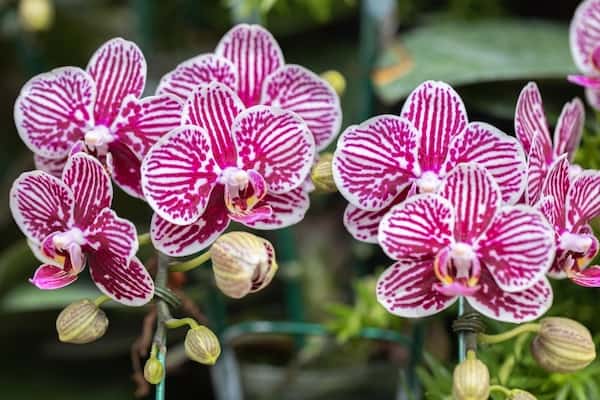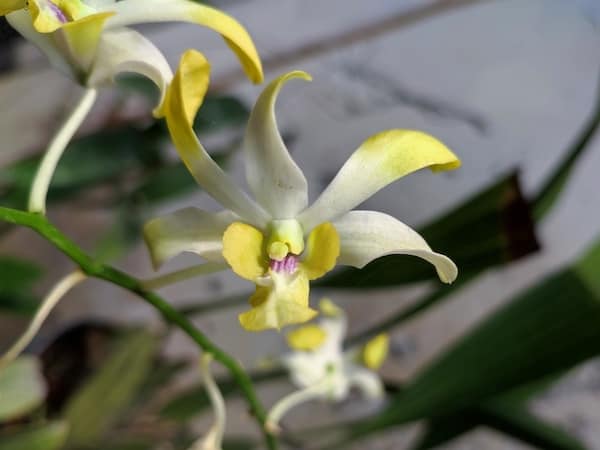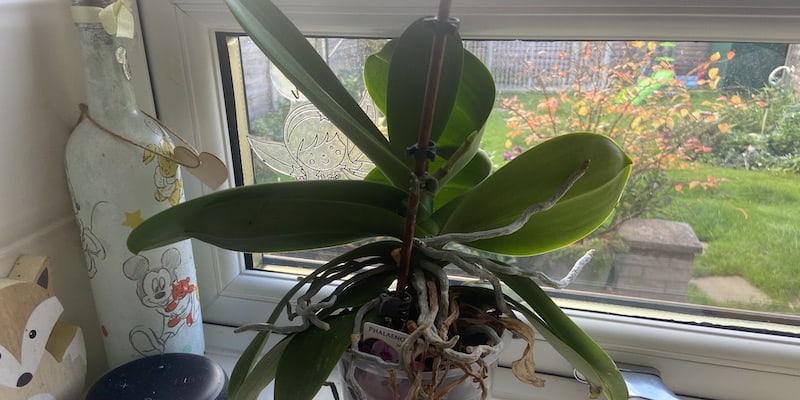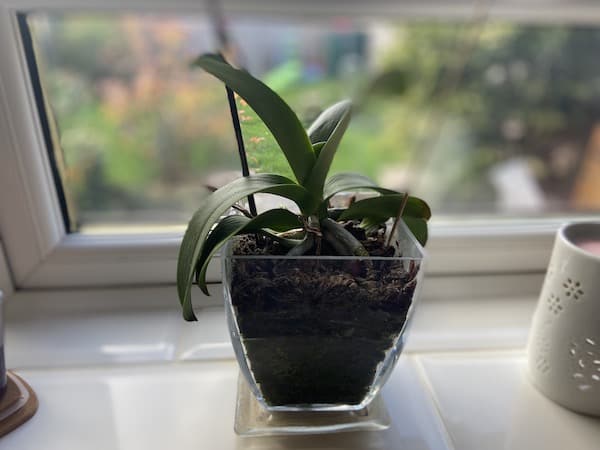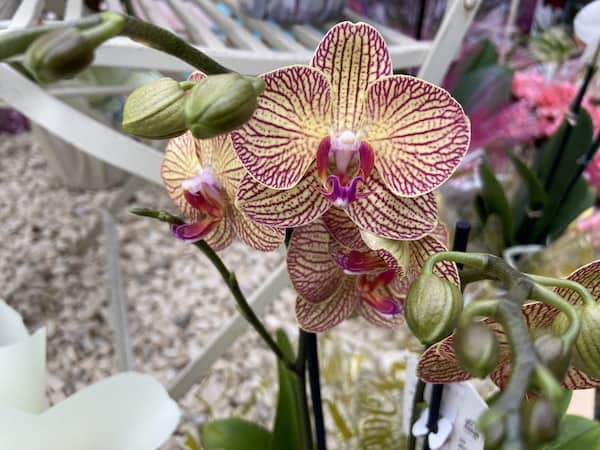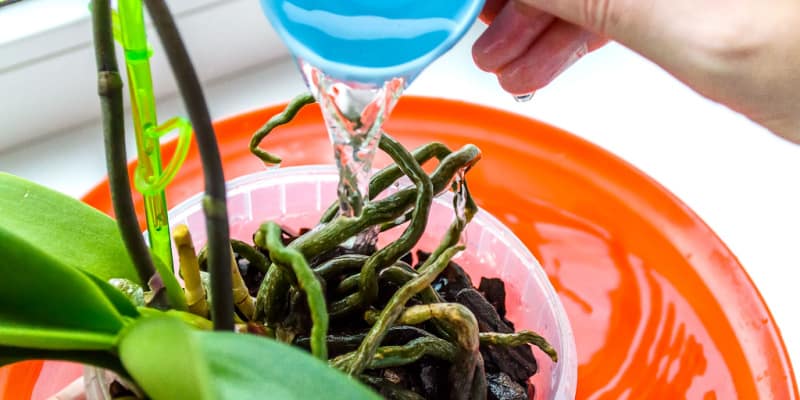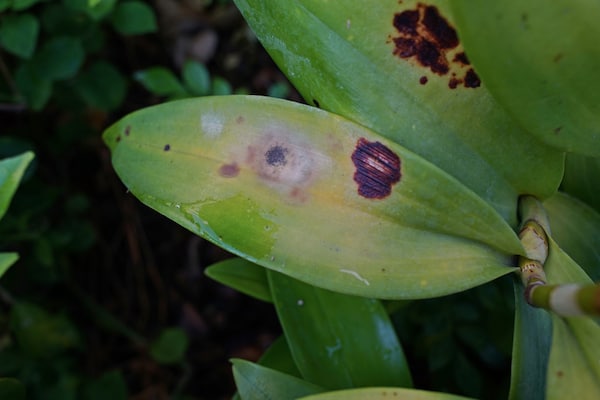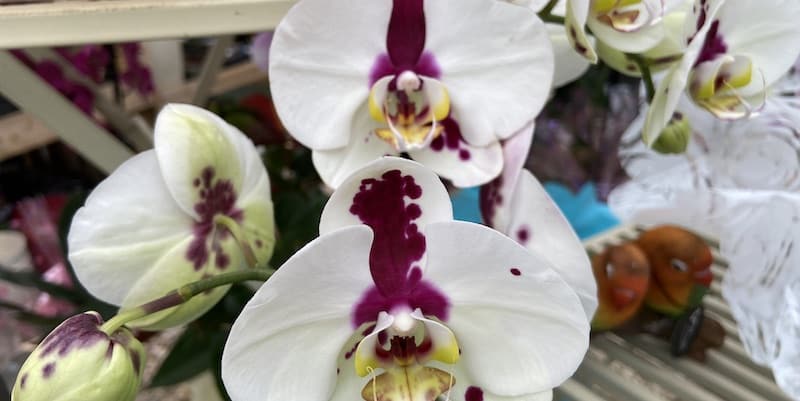
How to grow and care for orchids
Our site is reader supported, this means we may earn a small commission from Amazon and other affiliates when you buy through links on our site.
Despite their delicate-looking blooms, it isn’t that difficult to grow and care for orchids in the home. The keys to being a successful orchid grower, as with any indoor plant, is to provide them with the right growing environment (temperature, light and humidity) and the correct care (watering and fertiliser). Plus, there’s knowing what to do when you encounter problems with your orchid, including pests and diseases.
I explain what’s needed for healthy and strong orchids in this article.
Two main species of domestically grown orchids
Phalaenopsis orchids
The species of orchids that most people grow in their homes is Phalaenopsis. These are perhaps the easiest to grow and care for orchids and are certainly among the least expensive. This species of orchid can live for between 10 to 15 years, so you don’t have to throw them out when the blooms die.
Phalaenopsis are quite hardy so are ideal for the beginner orchid grower to start with.
Dendrobium orchids
Dendrobium orchids are the second more popular species of orchids for growing in the home. While the life span of these orchids does depend on the care with which you tend to them, their lifetime can be similar to that of the Phalaenopsis orchids of 10 to 15 years.
Growing environment
Special soil
Orchids are epiphytes, that is, plants that grow on other plants, trees or rocks. They don’t grow in regular soil and so you can’t use regular potting soil to plant them in. They need a special mix of bark, moss, clay, and other organic and inorganic elements. My article Do orchids need special soil? gives details about all of this and gives you the option of making your own orchid potting soil instead of buying a specialist orchid mix.
Temperature
Phalaenopsis are warm-growing orchids and prefer a temperature of 16°C – 18°C at night time. Warmer daytime temperatures of 18°C – 29°C are needed as well. Dendrobium orchids need a similar range of temperatures, though they can take a little more heat at night time.
Make sure to place the orchid plants out of any draft or breeze. Their thrive in constant environmental conditions and don’t like anything to change, especially suddenly.
Light
Given their temperature requirements, orchids love to be on a window sill that doesn’t get full sun. These are plants that require between six to 12 hours of indirect sunlight per day, even in winter. Full sunlight will burn the flowers and leaves of the plant and dry it out quickly, shortening its lifespan.
My article How much light do orchids need? goes into detail about the light requirements of orchids and how you use artificial light in the winter to need the orchid’s light needs.
Humidity
Even though the orchids that you purchase to grow at home are generations away from their natural rainforest ancestors, they still need a humid environment, especially in the dry winter. Placing the orchids on a pebble tray with some water in it will increase the moisture in their surrounding air when your winter time central heating is on. Just make sure that the water doesn’t reach the bottom of the pot as that would affect your watering schedule for the plant.
Beware ethylene gas near your orchid plant
This may seems a strange warning but ethylene gas can reduce the health of your orchid plant. This gas is emitted by ripening fruit so don’t put your orchid near your fruit bowl. And it’s also found in air fresheners. So keep the plant away from any air fresheners that are puffing pleasant scents into your home.
Care requirements
Watering
Watering is a key element of how to grow and care for orchids. Both under- and over- watering can lead to fungal diseases that seriously harm, or even kill, your orchids. The general rule of thumb is to wait until the orchid potting medium becomes dry before watering your orchid plant.
However, there’s a whole discussion about this along with how to water your orchid. The latest method, suggested by some, is to use ice cubes. For a detailed look at the watering of these plants, read my article When and how to water your orchid.
It’s important to get this right as your orchids’ health and very life depends on it.
Fertilising
Each type of orchid species has its own fertilising needs. But a general rule of thumb is to feed the orchid lightly but regularly during the growing season. Using a fertiliser created especially for orchids is the best idea.
Don’t fertiliser your orchids with every watering though. This can lead to a build-up of the minerals in the potting compost causing problems with the added strength of these. Try fertilising about every fourth watering for good results.
During the winter months, cut back your fertilising schedule. Or even stop feeding totally. The plant is in dormant mode and isn’t doing too much that requires extra nutrients.
As always, follow the manufacturer’s instructions on the fertiliser box or bottle if you’re in any doubt as to what to do.
Orchid problems
When you grow and care for orchids, you may encounter pests and diseases that can spread to orchids. My article Orchids pests and diseases describe the most common ones and what to do about them.
Maybe you notice specific issues with your prized orchids. Are the leaves turning yellow? Is the whole plant wilting or are the blooms dropping? Do you notice that the stem is now an unhealthy brown? Or are you missing blooms entirely from your plant?
You can also learn what to do with orchids to make them bloom again as well as keeping cats and dogs around orchids and whether you can eat them.
Click on the articles above or search on ‘orchid’ on this website for these and many other articles that give more information on how to grow and care for your orchids.
